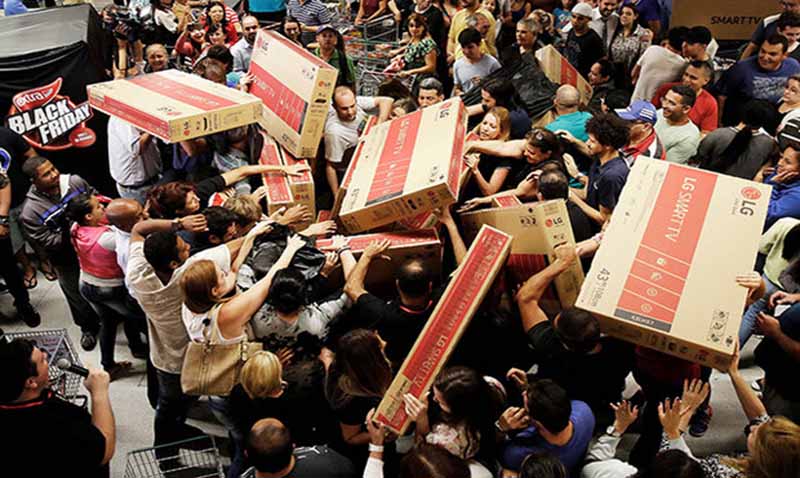 Reading Time: 4 minutes read
Reading Time: 4 minutes readThanksgiving is almost here, and to many Americans, that means turkey, football and Black Friday shopping. Love it or hate it, it’s become something of an institution in the United States. The day after Thanksgiving first became popular among shoppers in the late 1920s, when Macy’s department store advertised holiday sales during their annual Thanksgiving Day parade in New York City. This signaled the start of the holiday shopping season in the United States. Since then, it has evolved into huge sales in retailers across the country. It is an opportunity for retailers to create a sense of urgency by offering ridiculously low prices on certain items, offer special sales for limited hours during the day, or limiting the number of items available for purchase at the special price. Due to the high demand for hot “doorbuster” items, it is not uncommon for shoppers to camp out in front of their favorite stores in hopes of grabbing the coveted items.
Retailers capitalized on the increased popularity of online shopping and started marketing “Cyber Monday” deals. Cyber Monday has only been around since 2005, and legend has it, got its name because the average consumer had dial-up internet at home, and would wait to do their online shopping at work, where the internet connection was faster. While the deals on Cyber Monday might not be quite as good as those of Black Friday, more and more shoppers are taking advantage of the opportunity to stay in the comfort of their home the day after Thanksgiving. Last year, Cyber Monday surpassed Black Friday in terms of revenue—Cyber Monday sales reached $3.45 billion, up 10.2% from 2015, and just ahead of Black Friday’s $3.34 billion. This year, mobile sales are expected to make up for 54% (45% smartphones and 9% tablets) of online sales, beating desktop for the first time.
Small Business Saturday, a recent addition to the holiday weekend line-up, was founded in 2010 by American Express in an attempt to support small businesses and communities around the country. While it has not yet grown into a mega-success like Cyber Monday, 2.1 million small businesses and 112 million consumers participated in the event in 2016.
QuestionPro Audience conducted a study with its shopper panel to understand how consumers plan to shop over Thanksgiving weekend. Our research indicates that shoppers are looking forward to a vigorous holiday shopping season. Black Friday spending is always a good gauge on the state of the economy, and 49% of survey respondents indicated that they plan to spend between $250 and $750 this year on their Black Friday Shopping. A whopping 74% are going to spend the same as or more than they did last year, but only 14% of those surveyed plan to pay for their purchases with cash. As evidenced by recent Kmart and Sears store closings, e-commerce is taking away market share from brick and mortar stores. Online sites such as Amazon are where the majority of our respondents plan to shop. Although there have been predictions that mobile sales will be huge this year, only 10% of respondents plan to shop via mobile phone or tablet. Computers are the hot ticket item this year on 26% of our respondents’ lists, followed by clothing/apparel and kids toys, but mobile phones and video games are not as popular as they have been in recent years, with only 11% of our panel looking to purchase these items. Cyber Monday popularity is still going strong, and 60% of our audience plan to shop those sales as well, but only 27% plan to support Small Business Saturday. All in all, it looks like it will be a prosperous weekend for consumers and retailers alike.
QuestionPro Audience created an infographic with tons of interesting Black Friday information. Check it out!
Comment below or tweet us @qpaudience to let us know your thoughts on Black Friday shopping!









































